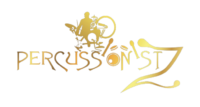They accept others as they’re and make an effort to move on. The hazard here is that members may be so centered on stopping conflict that they’re reluctant to share controversial concepts. It’s upon reaching this stage that a group can turn out to be excessive performing.
Behaviors during the Storming stage may be less polite than in the course of the Forming stage, with frustration or disagreements about objectives, expectations, roles and duties being overtly expressed. During the Storming stage, staff members might argue or become critical of the team’s original mission or goals. After working via the significant points, the group begins to coalesce and actually work as a group, supporting each other, and this is named the Norming stage.
Team Growth – Tuckman’s Mannequin
During this phase of team constructing, obligations are clearly defined and the team begins to map out a plan to realize its goals. The team’s chief is extra engaged in group constructing at this stage to ensure everyone understands the plan. If the team’s goals aren’t aligned, there could be errors and missed alternatives. While these 4 stages—forming, storming, norming, and performing—are distinct and customarily sequential, they usually mix into each other and even overlap. For example, if a new member joins the staff, there may be a second brief period of formation while that individual is integrated. A group can also need to return to an earlier stage if its efficiency declines.
- Helpful tools embrace having the proper know-how and accurate metrics to measure staff performance—as properly as understanding the method to throw an excellent party.
- You might nonetheless need to put out the occasional fire, however on high-performing teams, leaders can usually focus on monitoring progress, measuring results and celebrating achievements.
- Roles on the team could have turn out to be extra fluid, with members taking over numerous roles and duties as wanted.
- While working on a high-performing staff could additionally be a truly pleasurable and growthful expertise, it is not the end of team growth.
- After working through the numerous points, the group begins to coalesce and really work as a group, supporting one another, and this is known as the Norming stage.
- Tuckman’s principle is that every group moves through 4 levels on its way to becoming a high-performing staff.
Our shoppers embrace public and private sector organizations in addition to non-profits. The initial stage is normally marked by a combination of attitudes and feelings. Some members might be excited and optimistic about joining, whereas others might be anxious or perhaps skeptical about their roles. Meetings and other interactions will generally involve cautious attempts to get acquainted and discussions of big-picture concepts, as members determine norms and, in some circumstances, type cliques.
Supervisors of the staff throughout this phase are almost always collaborating. Even essentially the most high-performing groups will revert to earlier stages in sure circumstances. Many long-standing groups undergo these cycles many times as they react to altering circumstances. For instance, a change in management could trigger the group to revert to storming as the new people problem the present norms and dynamics of the team. The staff meets and learns in regards to the opportunities and challenges, and then agrees on targets and begins to deal with the duties.
High-performing teams undergo 4 outlined phases to succeed in their potential. This is true whether or not your staff works remotely or works in individual. “With group norms and roles established, group members focus on reaching widespread objectives, usually reaching an unexpectedly high degree of success.”[4] By this time, they are motivated and knowledgeable. The team members are actually competent, autonomous and in a position to deal with the decision-making process without supervision. Dissent is anticipated and allowed so lengthy as it is channelled via means acceptable to the group. Once norms are established and the staff is functioning as a unit, it enters the performing stage.
The construction might give roles to certain people or rule for all members to observe, nevertheless it ought to present a basic define for how the staff will function. The leader ought to guide the members through the method of attending to know each other and should motivate members to reach the team targets. If you may have ever been on a staff, you’ve in all probability seen its fair proportion of ups and downs. All teams undergo their high periods and low periods — it’s a part of the pure progression and improvement of teams. But likelihood is that even if you have skilled the excessive and low periods of groups, you might not know precisely what they imply or why they happen. Bruce Tuckman outlined these four phases of staff growth as Forming, Storming, Norming, and Performing.
Differences amongst members are appreciated and used to boost the team’s efficiency. The mostly used framework for a group’s phases of improvement was developed within the mid-1960s by Bruce W. Tuckman. At this stage, the team’s routine and norms turn into secure and alter infrequently. The staff might begin https://www.globalcloudteam.com/ considering strategically about their work and steadiness work on initiatives and process enhancements. The roles and boundaries are sometimes unclear at the Storming stage. Team members could not just like the work fashion of their new colleagues, challenge the emerging group norms and resist management.
Stage 5: Adjourning Stage
The 5 phases of group growth, in accordance with Bruce Tuckman’s model, are forming, storming, norming, performing, and adjourning. After reading everything above, you have a pretty good idea where your group is at – but does the rest of the team agree? We all understand issues 4 phases of team development in our personal unique method based on previous experience and what we all know now. The team improvement cycle begins over extra usually than you may suppose. It just means that when change occurs, people want time to adapt.

The adjourning stage is an important method of offering closure, and it can assist team members successfully transfer on to the following work project or staff with the sense of a job properly done. Building a team from the ground up comes with its personal challenges and rewards, but figuring out how it will develop might help you navigate the method. Tuckman’s four phases of staff improvement present a framework that can help you perceive your staff and extra successfully attain your objectives. Leaders of a staff in the Forming stage have a lot of accountability in serving to the staff come collectively. Members look to the leader for steerage, help, and structure. This stage is the time to create a team structure to stabilize the staff all through its growth.
Steps To Boost Group Performance
In addition to specializing in the scope of the team’s purpose and technique of approaching it, individuals in the formation stage are additionally gathering impressions and information about each other. Since individuals generally need to be accepted by others, during this era they usually avoid battle and disagreement. Team members may start to work on their duties independently, not but focused on their relationships with fellow team members. As you construct a brand new group, maintain the phases of team improvement in thoughts so you possibly can assist particular person team members attain their full potential and collaborate together effectively.
Mr. Marcus sees Rina within the break room sixty days into the project and casually asks how things are going with the team and the Banisher. Rina stories that things have settled down and she feels just like the group is working nicely collectively. She says that she met with each team member individually and explained their position in the project and gave them an opportunity to share any concerns they’d. After the individual conferences, she had Jada from human resources come to a team assembly and conduct some team-building workouts and fascinating teamwork activities. The result of the session with Jada was a Bug Banisher Team vision assertion that everyone agreed upon. However, when teams attain the Performing stage, they do not necessarily stay there.
Storming starts when conflicts and competition emerge in the staff. At this stage, the team targets may already be clear, though its members might have different views on the best ways to realize them. Managers ought to help the group consider everyone’s perspective and allow each member to contribute to related group discussions. [newline]Reaching consensus on every problem that requires a debate is essential — compromises won’t assist in the lengthy term.
Frequent and common group retrospectives are nice for discussing and resolving points at this stage. Because storming could be contentious, members who are averse to conflicts might find it disagreeable or even painful. This can lower motivation and effort by drawing consideration away from tasks. In some cases storming (i.e., disagreements) may be resolved shortly. Other times a team never leaves this stage and turns into caught and unable to do its work. Patience and consideration towards team members and their views go a great distance toward avoiding this downside.

Teams are a essential a half of any business or group, but developing an efficient group is usually simpler stated than done. A profitable staff is more than just a group of people working together – it’s a group of people with complementary abilities who are committed to a common goal. Rina, the leader of the Bug Banisher Team, comes to Mr. Marcus thirty days after the initial meeting. She has a laundry list of issues to debate, and none of them is nice.
The forming → storming → norming → performing model of group growth was first proposed by psychological researcher Bruce Tuckman in 1965. In this stage, all staff members take duty and have the ambition to work for the success of the group’s objectives. They begin tolerating the whims and fancies of the opposite team members.

Managers should be sure that the staff norms are mentioned, accepted, and adopted by every staff member. The fifth stage of group improvement, also recognized as the mourning stage, is the final stage a staff will undergo. After a project is over or if a team is disbanded, team members who worked together will go into a small mourning interval.
